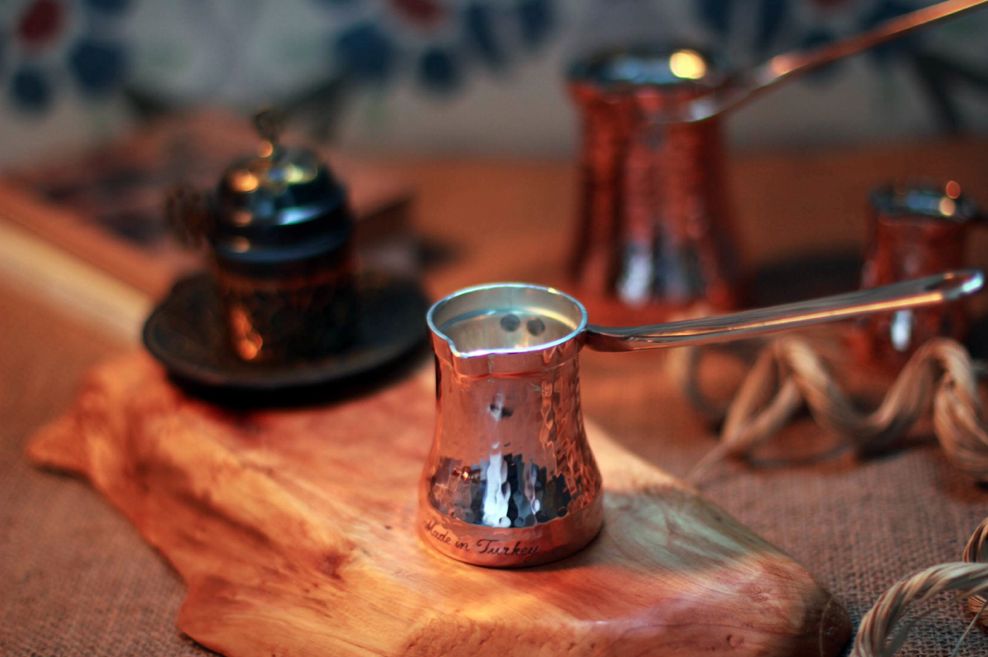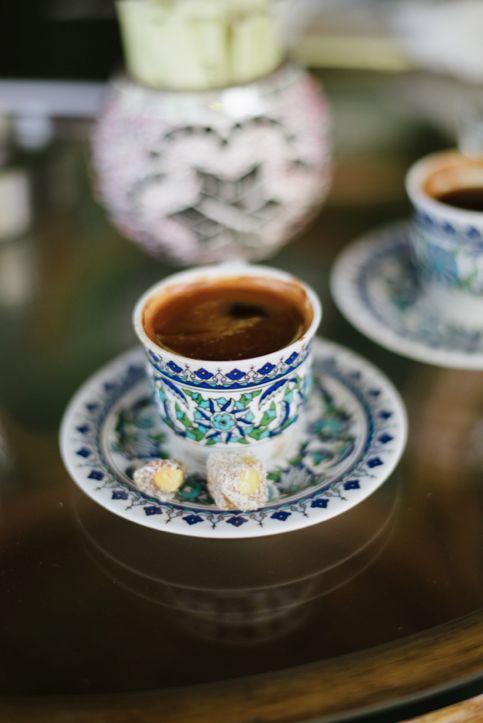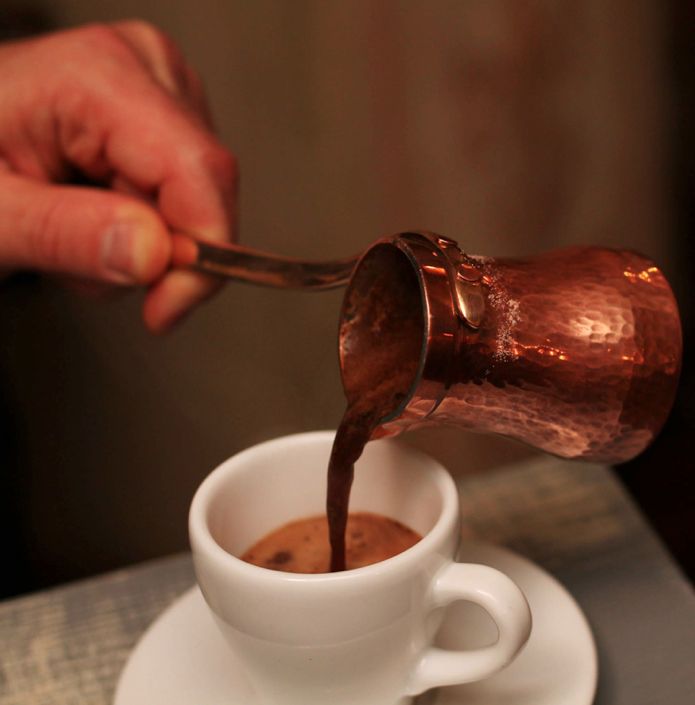Ancient Turkish Brew: The Cevze
The little Turkish coffee pot that could, is documented to be the oldest known method of brewing coffee. When at the World of Coffee in Rimini we discovered the Cevze, or Ibrik as it is otherwise known, is a coffee craze all its own. We asked one the top brewers in the world, Mr Vadim Granovskiy the UK Ibrik Champion who hails from Ukraine, to explain how he fell in love with it and how best to brew one at home.
Words by Vadim Granovski
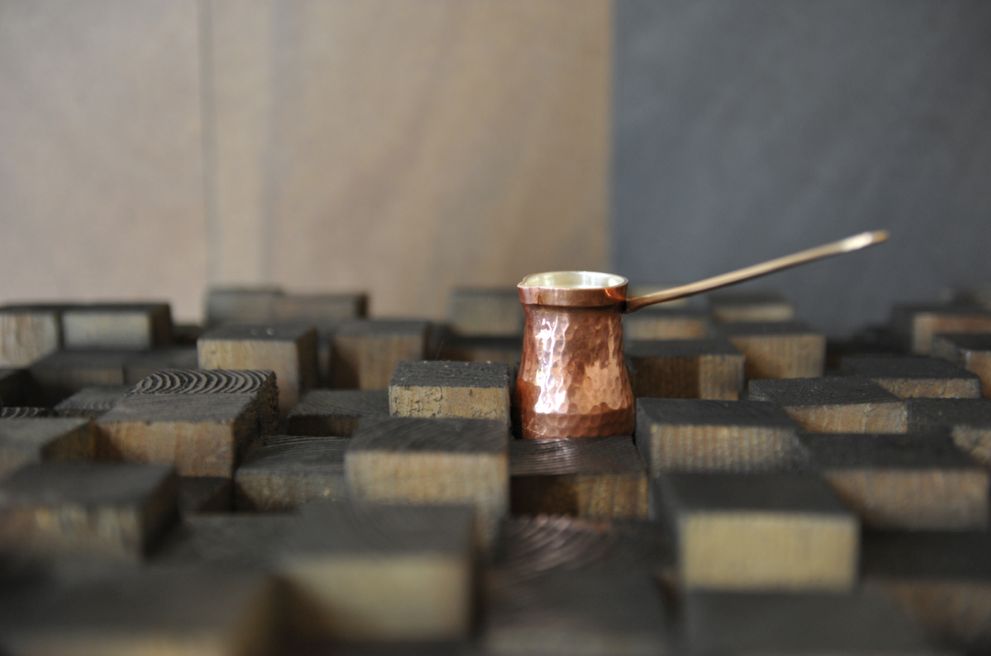

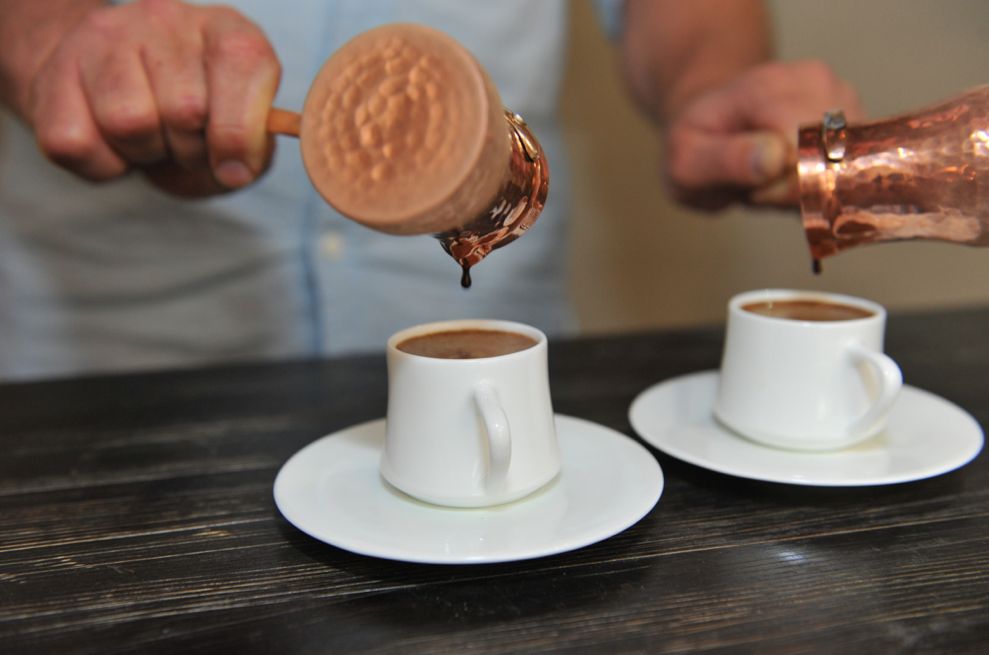
The Cevze, commonly known as a Turkish coffee pot or Ibrik, brought coffee to life. It is arguably the world’s first coffee brewing tool that used chemistry to extract a desirable flavour and achieve a desirable texture and appearance from the then mysterious coffee bean.
The entry of coffee to Europe is credited to the Ottoman Empire based in Istanbul when the discovery of roasting the beans in Yemen drew interest to the bean and its applications. The King even had a dedicated coffee maker! The common misconception these days is that the Turkish method is sickly sweet and syrupy in texture, this is however not how it started out and in fact, most Turks still drink it
sade, no sugar.
I was born in Ukraine but lived in England since my student years and call London my second home. In fact this multicultural city with bustling and vibrant coffee scene is where I was immersed into the world of Specialty coffee where the Cevze has now found a home. Ukraine has a pretty strong coffee culture, with cezve being the most popular brewing method. Curiously, it was actually a Ukrainian diplomat, Yuri Kulchitsky, with strong ties with spreading the introduction of Turkish coffee to Europe and was the first to tempt the Viennese with the milked up and sugary variety of traditional Turkish coffee.
I discovered cezve early in my childhood, with the intoxicating aroma of freshly ground coffee beans in our family home being one of the most memorable moments. My parents used to say that coffee carries people away from the mediocrity of daily life and obliges them to think.
In my early thirties I spent two years living on the beautiful island of Bali, Indonesia. Being a coffee producing region, Bali allowed me to develop a deep emotional connection to coffee, culminating with opening a small coffee shop in Bali’s spiritual capital, Ubud. Spending time with Balinese coffee growers on mesmerizing volcano slopes in Kintamani and helping them with daily routine, gave me a chance to learn coffee from the cherry to the cup.
Upon returning to London I started to experiment with different brewing methods in my pursuit of a perfect cup of coffee. Cezve caught my attention, particularly when I started to produce consistently good results, combining traditional brewing techniques with the innovations of modern science behind the speciality coffee industry.
I use professional grade artisan hand hammered copper cezves by Soy. Entirely hand made in Istanbul, the home soil of Turkish coffee, these silver plated cezves are truly works of art and an ultimate brewing tool. Copper, due to its high heat conductivity, distributes the temperature evenly, allowing us to gently infuse water with aromatic oils extracted from coffee beans.
So, what makes great cezve coffee? Ultimately, it starts with coffee beans. Specialty fresh roasted coffee beans. I strongly recommend that you support your local coffee roasters and buy single origin beans. I prefer Ethiopian coffees, light to medium roast, with floral aromatics, citrus, berry, spices and dark chocolate flavours.
98 percent of coffee is water. So, it is essential to use only pure natural water or filtered water to brew the coffee.
High quality ingredients are fundamental for brewing great coffee. For instance, I use only organic palm sugar in my brew. It is actually coconut palm flower nectar, a very healthy sustitute for sugar, with very low glycemic index. It also adds a gentle caramel notes to coffee. Occasionally I am using a few drops of cold pressed ginger juice, a well-known gastronomical and pharmaceutical ingredient which adds a gentle bite to the taste.
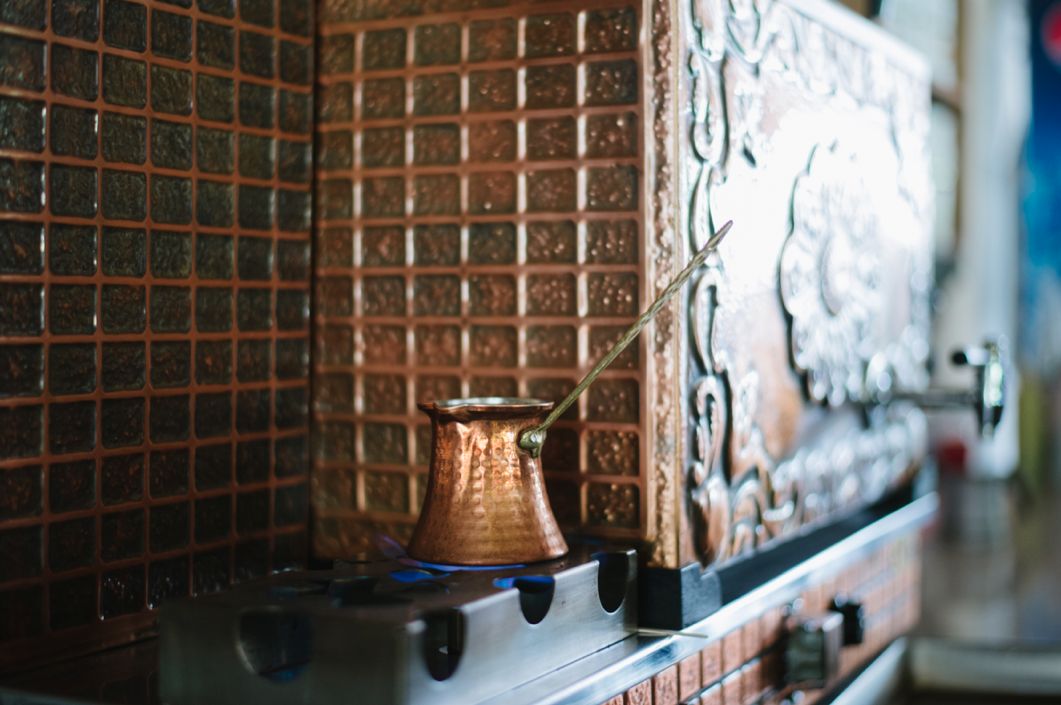
As a rule of thumb we use 7-8 g of coffee per 100 ml of water for coffee brewing. Coffee beans for cezve brewing method should be ground very fine, almost powder like. Ideally, immediately before brewing. I advise to add very little sugar, and learn to enjoy natural sweetness and flavours of coffee. Add ground coffee to cezve, gently pour water, leaving around 1 cm from the rim to develop crema. Very important to control flame and brewing time. I advise 4-5 minutes brewing time.
Coffee should not be boiled, try to control your heat source to encourage a steady rise in temperature. Crema is a very good indication that the coffee is ready and develops when temperature reaches 92-95°C. If coffee is boiled, the crema is destroyed and the delicate aromatic oils will be burnt off and coffee will taste sour and bitter.
Once ready, coffee should be poured into small cups, with thick crema covering coffee in each cup, and rested for 30 seconds to allow grounds to settle.
Specialty cezve coffee is like wine. If it brewed correctly, one can savour every sip. Coffee is a social drink and fuel to power creativity. Ultimately, sharing a cup of coffee with friends and loved ones is part of any recipe, because coffee tastes much better when shared.
Hand made in Turkey: The Soy Cezve
(
www.soy.com.tr)
Material
This hammered thick-walled copper cezve is seamlessly hand-made from a single 1.5mm thick leaf of metal. Copper’s high thermal conductivity allows the cezve to warm through evenly, bringing out the best of the taste and aroma from the coffee beans. It is lined from the inside with top quality silver, a precious metal known for its anti-bacterial qualities. When heated up silver does not react with water and acids, and therefore doesn’t affect the taste of the drink.
Form
Soy cezve is cone-shaped with a flat wide bottom and a narrow neck. Its wide bottom allows for even heating. The coffee grounds settle down quicker due to the cone shape of the cezve. The narrow neck helps create a thick foam layer on top which keeps the coffee aroma inside. Hand-forging technique improves the quality and structure of the metal leaf as well as produces the specific surface texture of the cezve.
Bottom
Due to its flat and wide bottom, the cezve is steady enough to be used on gas and electric stoves, portable burners, in sand and on coal. The wide bottom surface also helps the drink heat up evenly.
Neck
The narrow neck helps create a layer of thick dense foam, the so-called “coffee’s face”. The foam blocks the gas exchange processes, locking in the evaporation of the aromatic oils. The cezve’s design sets the neck in a separate section leaving space for the foam build-up.
Handle
The cast bronze handle is located at an angle to the cezve, securely fixed to it with copper rivets. It is long enough to exclude contact with the hot surface. Bronze’s low thermal conductivity prevents the handle from heating up.
